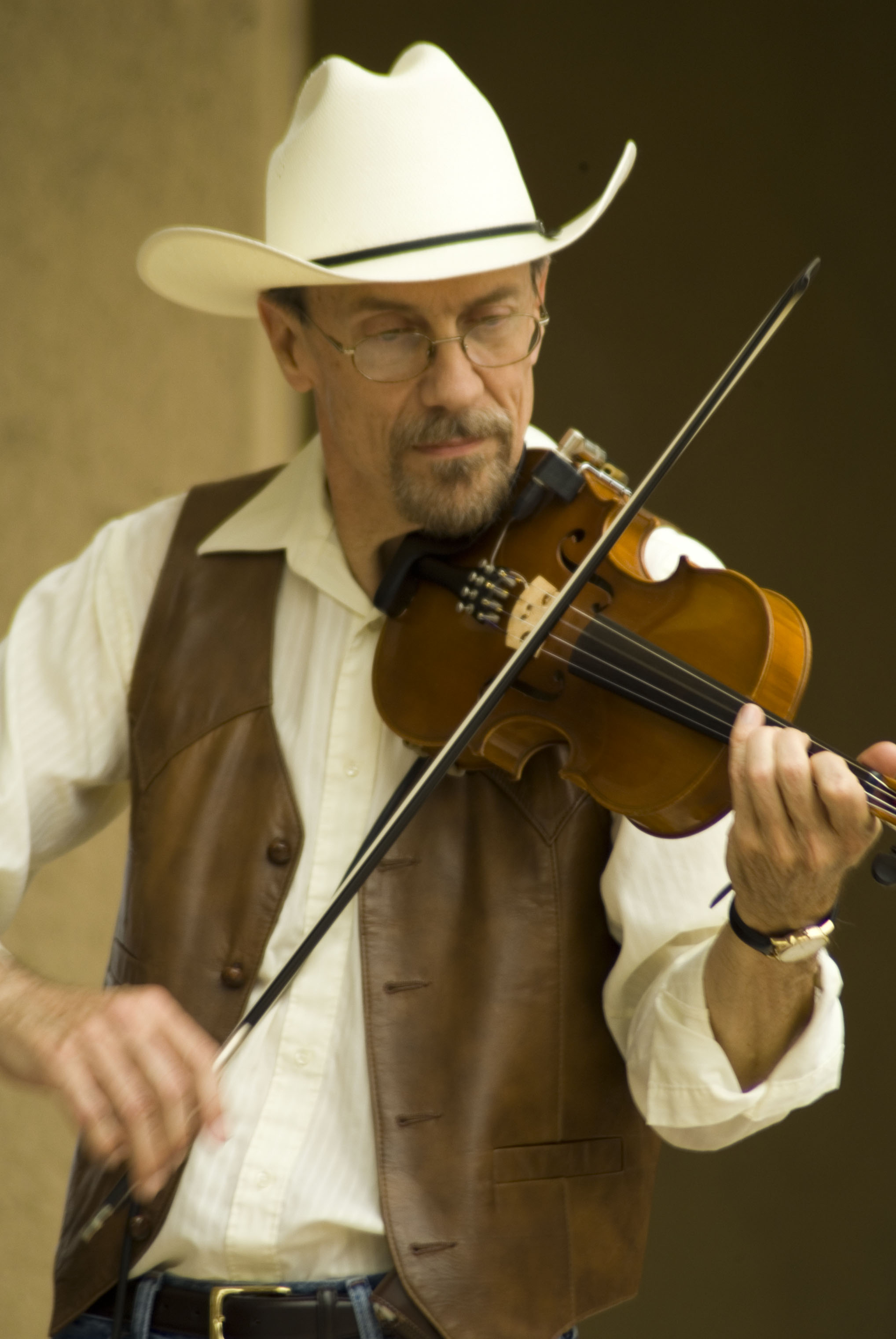
American fiddle
American fiddle-playing began with the early European settlers, who found that the small viol family of instruments were more portable and rugged than other instruments of the period. According to Ron Yule, "John Utie, a 1620 immigrant, settled in the North and is credited as being the first known fiddler on American soil".[1] Early influences were Irish, Scottish, and English fiddle styles, as well as the more upper-class traditions of classical violin playing. Popular tunes included "Soldier's Joy", for which Robert Burns wrote lyrics, and other tunes such as "Flowers of Edinburgh" and "Tamlin," which have both been claimed by both Scottish and Irish lineages.
This article is about fiddle music in the United States. For other North American styles, see Fiddle § North America.Soon these tunes developed American identities of their own; local variations developed in the Northern and Southern colonies. In contemporary American fiddle styles, the New England states are heavily influenced by all Celtic styles, including Cape Breton fiddle-playing; whereas Southern or "Dixie" fiddle styles have tended to develop their own traditions, which emphasize double stops and in some instances the incorporation of dance calls or simple lyrics.[2]
According to London-based music writer Chris Haigh, fiddle " was among the primary instruments used by the rural blacks..."[3] He contends that by 1930 over 50 different black blues fiddle players had recordings. Many musicians who were guitar stars also played fiddle including:
Blues fiddle uses the pentatonic blues scale to create riffs for breaks and over guitar chords typically in the standard blues progression. Vibrato is not often used, although may occasionally be used in an exaggerated manner for special effect.
Bluegrass music originated with the fiddler Bill Monroe. According to Haigh, "Monroe always considered the fiddle to be the key instrument of bluegrass".[6] Other key fiddlers in bluegrass include:
Cajun fiddle[edit]
According to Ron Yule, "Louisiana fiddling had its birth roots in Europe, with fiddling being noted as early as the 15th century in Scotland."[1] The most widely known Cajun fiddler is Doug Kershaw. Zydeco music is closely related.
Rock fiddle, like rock music in general, owes much to American blues. Incorporation of fiddle or violin into rock, as with jazz, has been a slow process, resisted by some critics as an"unlikeliest and perverse misuse of an instrument".[7] Rock has roots in folk music particularly the American folk revival of the 1960s, and thus as a matter of usage some writers refer to "rock fiddle" when discussing playing by classically trained musicians who join rock bands and thus import classical style rather than fiddle style into their playing.
Rock violinists often use solid body electric violins to reduce feedback. Rock is an international phenomenon and is consequently influenced by cross fertilizations from rock players such as Ashley MacIsaac[8] Nevertheless, American rockers continue to experiment. For instance, eclectic rocker Natalie Stovall,[9] a graduate of Berkelee Conservatory,[10] covers Led Zeppelin, AC/DC, Michael Jackson, Lenny Kravitz, The White Stripes, Lynyrd Skynyrd, Jimi Hendrix, all the while alternating between standard rock vocals and fiddle/violin riffs.[11]
Other rock fiddle or violin players include
One of the most prominent examples of the New England fiddle tradition was Maine's Mellie Dunham, who was a sensation in his day. Today New England fiddle playing is exemplified by Rounder Records artist Frank Ferrel.[17] He refers to the style as "Down East" in his volume Boston Fiddle.[18] Unlike other fiddle traditions, piano accompaniment is common, and, he notes occasionally saxophone or clarinet would join in.[19] Another feature is frequent use of minor keys particularly G minor and also the "flat keys" of F Major and B flat Major, which are not typically used in Old Time and other indigenous music traditions. Ferrell traces his roots into the 1800s Boston Scottish and Irish cultures as typified in musicians such as William Bradbury Ryan.[20] Like all Celtic American fiddle traditions, his is influenced by the publication of Chief O'Neil's massive directory of fiddle tunes in 1903 [21] Thus, Ferrel and others in the North East tradition use the full panoply of Irish fiddle ornamentation.
Other influences include Scottish fiddling and Cape Breton style, which has its own blend of Celtic traditions which include also Normandy styles.
Canadian and other international influence[edit]
American fiddle traditions are deeply influenced by international influence from numerous immigrations and ordinary commerce particularly from Anglo-Celtic and Canadian sources. Québécois French, Cape Breton, Nova Scotia. [22] Folk music tradition but has distinct features found only in the Western hemisphere[23] This influence is largely due to immigration and cross-border commerce.[24] Some observers categorize Maritime influence as a cosmopolitan trend of its own blending otherwise distinct styles which outlines several influences on what they call Northeastern Fiddling Styles: Cape Breton, French-Canadian (Québécois) and Maritime.[23]